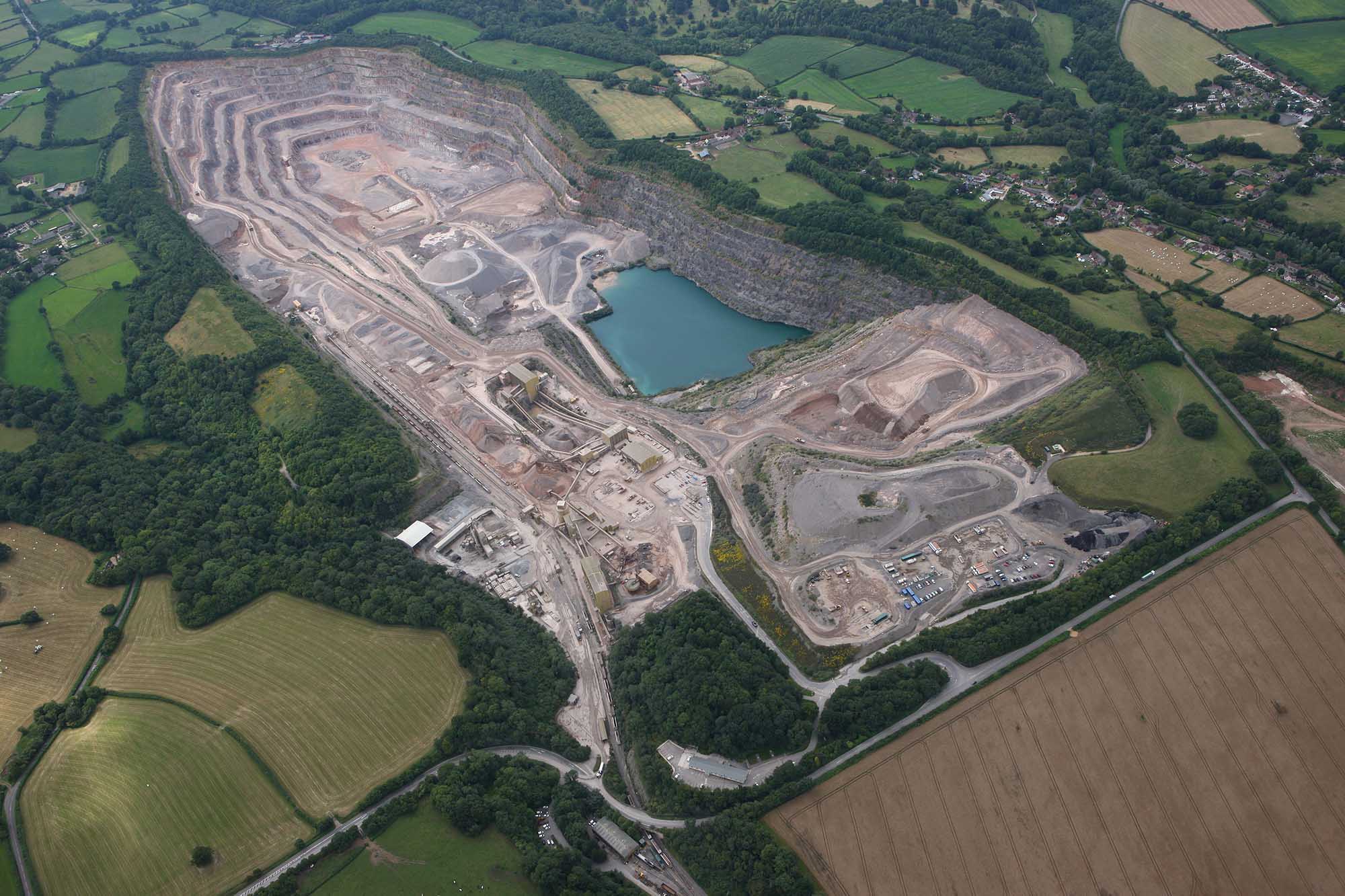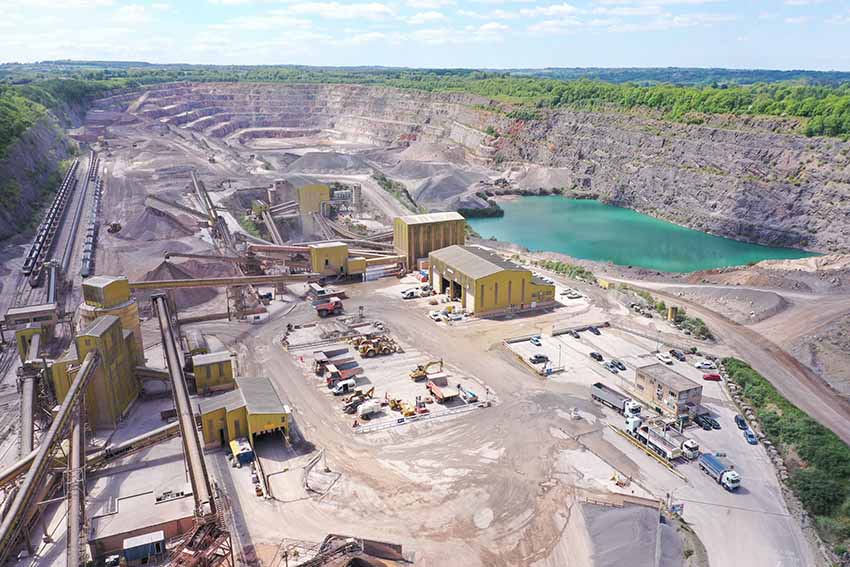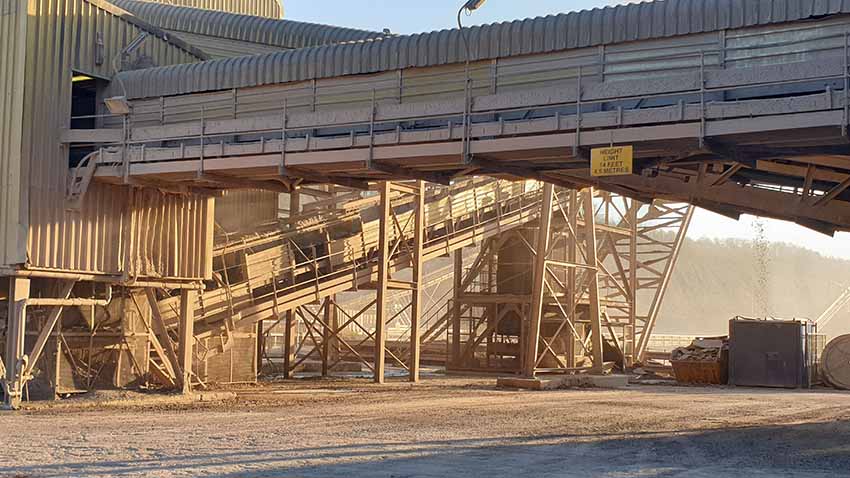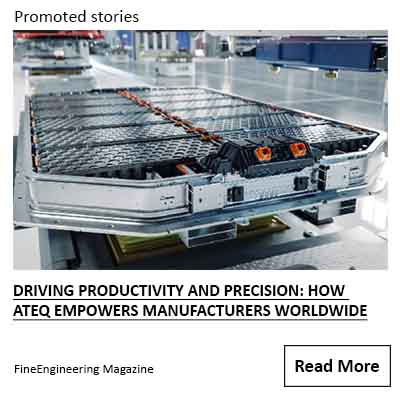In May 2019, the management of Whatley Quarry, owned by Hanson Aggregates, located near Frome in Somerset, approached Vulcanising South West Ltd and asked them to carry out a belt calculation on their CV07 conveyor. The conveyor carries crushed limestone aggregate and is central to the site’s operation because without it, all primary and secondary crushing operation comes to a dead halt. Their concern was that the maximum expected operational life of the 1000/4 6+2 belts being used on this conveyor was averaging only 6 to 12 months. To make matters worse, the belts also required an abnormally high number of repairs, especially splice repairs, with each repair carrying extra cost and causing serious downtime.
Whatley Quarry first began operations in the 1960s and is the largest of Hanson’s quarries in the UK. It employs more than 60 people, along with a wide range of support staff and contractors. The quarry supplies crushed limestone aggregate to local markets by road and to depots in London and South East England via a dedicated rail link. Operating 24 hours a day, 5 days per week, it produces between 4 to 5 million tons of aggregate a year. There are also other plants on the site producing asphalt and ready-mixed concrete. Limestone reserves are in the order of 100 million tons. The site extends to 1.7 million square metres, of which 1.2 million square meters is covered by the limestone extraction site.
Over-dimensioned
The first thing that the Vulcanising South West team identified was that the belt appeared to be over-dimensioned for the application, possibly as a result of previous efforts to increase belt life. One indicator of this was that the snub roller diameters were too small for a 1000/4 6+2. Under normal running conditions, the 1200mm wide belt carries between 500 and 1400 tons of material per hour depending on the number of crushers in operation. Average tonnage in normal operation is 1200tph flowing onto the belt from a 600mm height. Maximum material size is 150mm.
The VSW team felt that a Dunlop 630/4 6+2 RA (DIN Y) Superfort or a Dunlop Ultra X3 specification belt would be more than capable of dealing with the demands of the application. However, in light of the historical data, they decided to increase the specification to 800/4 6+2, as added ‘insurance to help maximise the life of the belt whilst still falling within the range of Dunlop’s ‘Safety Factor’. VSW and Dunlop were confident that the Superfort belt would provide a significant increase in lifespan as well as a reduction in downtime and operating costs compared to previous belts installed.
SUPERFORT® 800/4 6+2 RA DIN Y, MOULDED EDGES
A report containing findings and analysis was discussed with Whatley Quarry and a quote requested for Vulcanising South West Ltd to supply and install Dunlop Superfort® 800/4 6+2 RA DIN Y with moulded edges. A fully detailed technical data sheet supported the offer made to Hanson.Aggregates, who duly awarded the contract to VSW.
SPLICE AND HOT VULCANISE ON SITE
Prior to the VSW team arriving on site, a SSOW (Safe Systems of Work) was completed by Craig Jones, the Health & Safety manager representing VSW. On arrival, a job-specific risk assessment and method statement was created prior to starting the installation work. In combination with the team at Hanson, all the lifting and handling equipment had been organised beforehand. The splice was hot vulcanised using a Shaw Almex press.
STATEMENT FROM HANSON AGGREGATES: In June 2019, a Dunlop Superfort 800/4 6+2 RA belt was supplied and fitted by Vulcanising South West. The belt was operational for 12months and only changed because of the mechanical failure of a liner plate, which cut the belt along its full length 200mm from its edge. Operation, maintenance and inspection activities continued as normal and revealed a significant reduction in repair and belt maintenance costs. The Dunlop Superfort belt has outperformed the previously used belt and saved as a result on both downtime and additional maintenance costs during its life. Total belt life is currently estimated at 18 months, which represents a 75%-100% increase in operational life against tonnage and an annual 45% cost saving.
| C7 CONVEYOR SPECIFICATIONS | |
| Conveyor layout | horizontal |
| Conveyor length | 42.7m |
| Angle of incline | 0° |
| Maximum tonnage | 2.300 tonnes/h |
| Maximum lump size | 150mm |
| Maximum stone drop | 600mm |
| Head drum diameter | 630mm |
| Tail drum diameter | 500mm |
| Gravity tension unit drum diameter | 500mm |
| Snub drums diameter | 355mm |
| Belt speed | 2.2m/s |
| Motor | 28kw |





